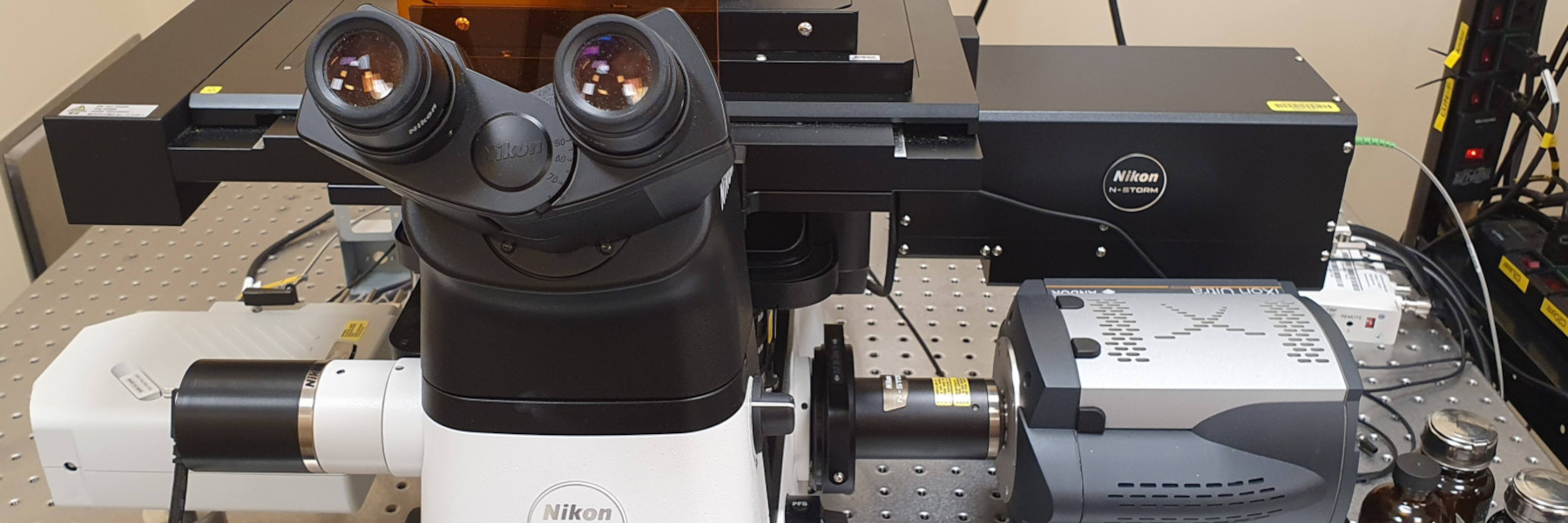Indiana University Bloomington, Center for Cannabis, Cannabinoids, & Addiction
Overview
The Center for Cannabis, Cannabinoids, and Addiction and the Multi-Scale Imaging Core-STORM supports the research community to study molecular changes in association with substance use disorders. We provide know-how for molecular imaging in a brain circuit-, cell-type, and subcellular compartment- and nanodomain-specific manner that accompanies the different aspects of substance use disorders such as intoxication, craving, or withdrawal.
Available Equipment
3DHISTECH Pannoramic MIDI III slide scanner
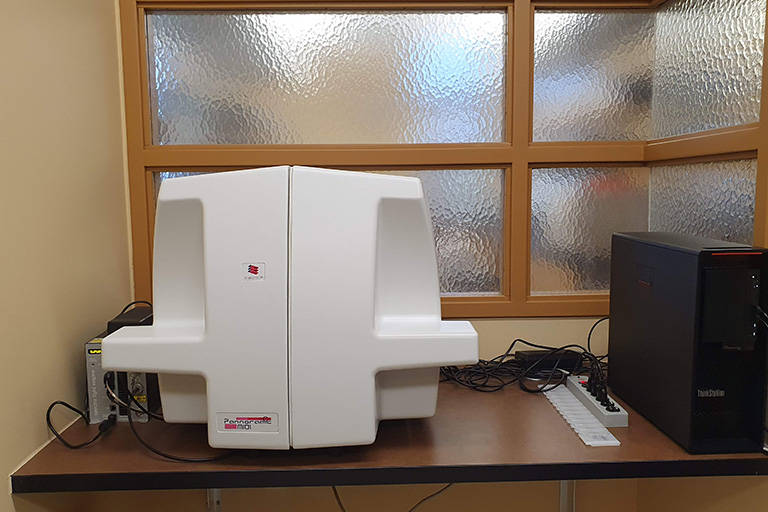
The 3DHISTECH Pannoramic MIDI III slide scanner is used for automated transmitted and EPI fluorescent imaging.
Nikon A1-HD25 Confocal Microscope
The Nikon A1-HD25 confocal microscope is used for confocal and transmitted light imaging. Camera based DIA and EPI fluorescent imaging also available.
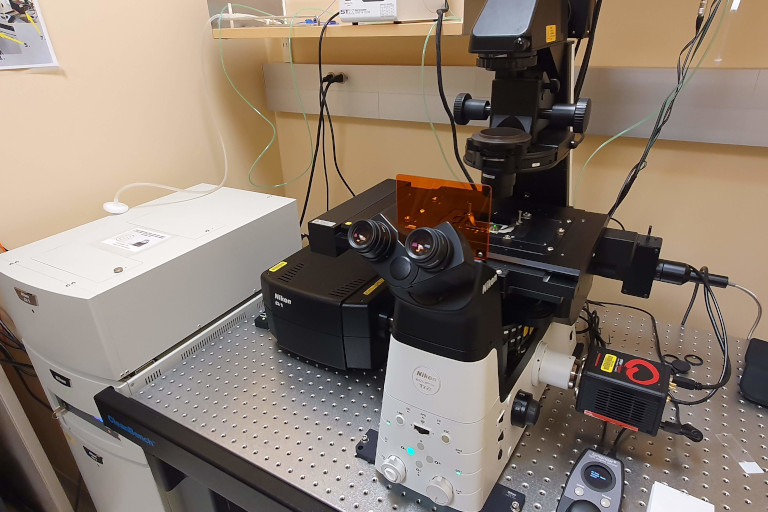
Nikon A1R-MP in vivo Resonant Two-Photon Microscope
The Nikon A1R-MP in vivo resonant two-photo microscope, coupled to an InSight DeepSee IR pulsed, dual line laser, and customized stage can be used for awake and highly monitored mouse behavioral studies. Click here to learn more about the MPM core.
Nikon N-STORM 5 with C2 Confocal
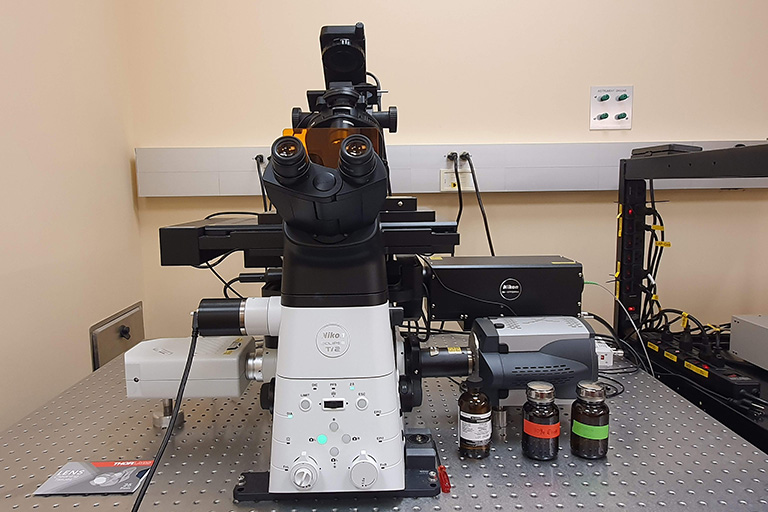
The Nikon N-STORM 5 with C2 Confocal allows for correlated confocal and STORM nanoscale imaging.
In addition to the above named equipment, the MSIC-STORM core is equipped with two wide-field fluorescent microscopes as well as equipment for perfusing rodents, sectioning tissue, and the storing of tissue sections.
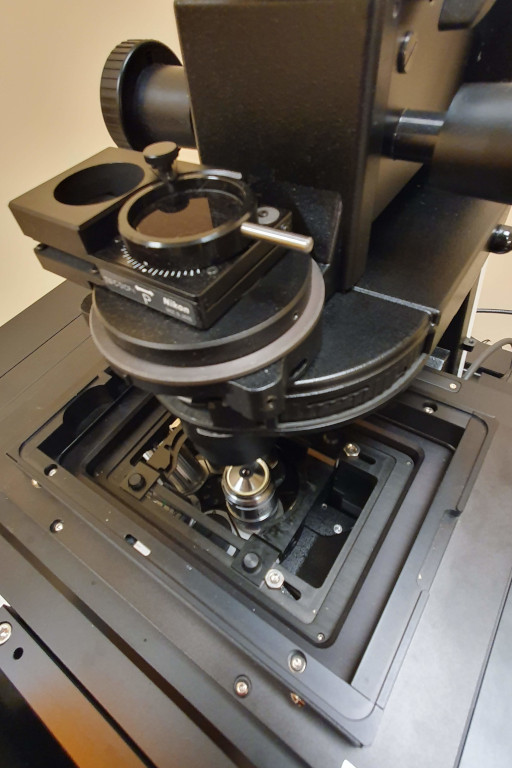
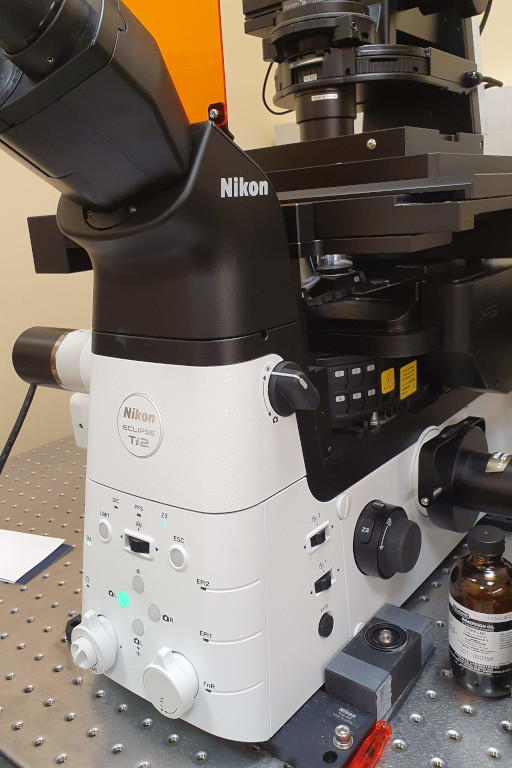
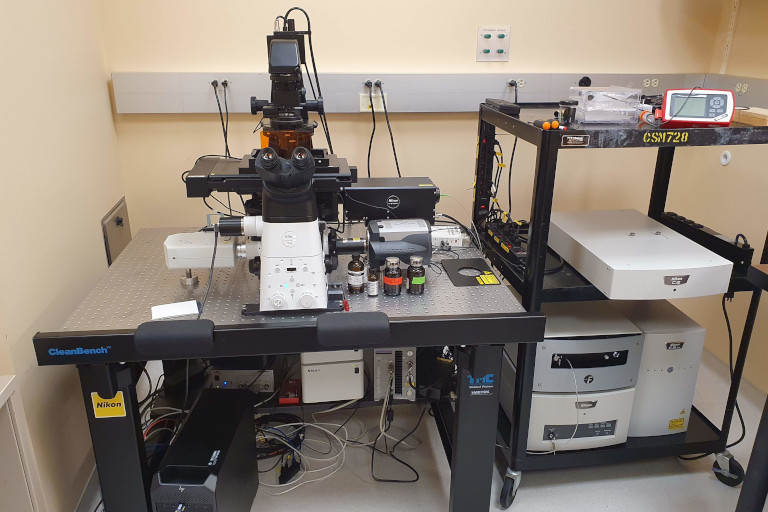
Applicant Eligibility
Applicants interested in applying for a project with the MSIC-STORM research core must:
- Be a trainee or PI currently working in or moving into the substance use disorder field.
- Have a well-developed research plan designed to address significant questions related to substance use disorders and provide preliminary data for grant applications.
- Have clear rationale on how the experimental data generated by the imaging core will answer a research question.
- Identify a qualified scientist from the PI’s lab who can physically be in Bloomington for the duration of the experiment.
- State a clear plan to analyze and summarize data in a timely manner.
- Agree to share the data generated with the greater scientific community once results are published.
Criteria
Specific Criteria for MSIC-STORM Proposals
The only prerequisite is that the investigator will need to have a specific and sensitive labeling probe (antibody or small molecule) and access to appropriate tools for control experiments (KO mice, receptor antagonists, enzyme inhibitors). The application should also contain a power analysis to estimate the necessary sample size for the project. This analysis needs to take into account that investigating molecular changes in both sexes is advised.
In the application, the investigator needs to briefly explain the substance use disorder model that is applied in their lab for the specific project. The experimental animals will need to be perfused in the applicant’s lab at the time point(s) relevant for the experimental goal. We are glad to give advice, share our lab protocols and provide a brief one-day presentation training at IU of our perfusion protocol, if it would be helpful.
Next, the application should provide a detailed structure of the experimental plan based on the following workflow:
1. Which brain circuit will be analyzed by the Slide Scanner?
As Step 1, it is advised to determine which addiction-related brain regions exhibit the strongest changes in the levels of the target protein by using a systematic regional analysis by the MIDI-III Slide Scanner.
2. Which cell-type will be investigated with the A1 Confocal Microscope?
As Step 2, it is advised to determine which cell types contain the target protein. Visualization of this cell-type is possible by neurochemical markers and immunolabeling, or cell-type-specific expression of a fluorescent protein.
3. Which subcellular compartment will be studied with the A1 Confocal Microscope?
As Step 3, it is important to determine which subcellular compartments may be the most relevant for the molecular changes associated with the substance use disorder model (axon terminal, axon, axon initial segment, cell body, dendritic shaft, dendritic spine; or different compartments of astrocytes, oligodendrocytes, microglia). Changes in immunolabeling intensity can be due to cellular (sprouting or pruning) alterations or specific molecular adaptations without a change in morphological parameters. This step will be carried out by a confocal microscopy analysis.
4. Which target protein will be studied in a nanodomain-specific manner by correlative confocal and STORM microscopy on the combined N-STORM and C2 confocal setup?
As Step 4, it is important to determine the nanoscale molecular changes associated with the substance use disorder paradigm. The target molecule will be visualized by immunolabeling or by pharmacolabeling, whereas the target profile (cell-type and subcellular compartment) will be visualized by immunolabeling. Correlated confocal and STORM imaging will be used to determine to establish the nanoscale molecular adaptations in the respective target profile.
Before preparing the application, please consult Laszlo Barna and Istvan Katona, who will help you with further questions and help to optimize your experimental workflow.
Application Review
Reviewing the Application
Each proposal will first be reviewed by the Dr. Katona for suitability. Proposals deemed suitable will be reviewed by the C3A steering committee. Drs. Barna and Katona will work together with the steering committee to select projects based on scientific value, predicted impact on the substance use disorder field, and feasibility. All applicants will receive feedback on their proposals and will be offered the opportunity to be mentored by a C3A PI or Affiliate in revised applications to the C3A. Three multi-scale imaging projects can be accommodated per year (July 1 through June 30).
Criteria for Review
MSIC-STORM Proposals will be ranked by the following criteria:
- A clear rationale on how the proposed research project will benefit from access to the MSIC core and will address substance use disorders.
- A well thought-out experimental plan on how data generated from the MSIC core will benefit a grant proposal and/or provide key data for a manuscript in preparation.
- The impact of data generated by the MSIC core on the applicant’s ongoing research program. Lower priority will be given to proposals that merely supplement ongoing research.
- Data from MSIC core will be critical for the PI’s NIDA (or other relevant funding agency) grant.
- Readiness to conduct the proposed experiment, such as the availability of essential mouse lines and/or key reagents for the proposed experiment.
- A clear plan and commitment to execute the proposed experiment and availability of an experienced researcher from the PI’s lab to perform the experiments, data acquisition, analysis and visualization with the supervision of C3A experts.
Apply Now
Do you want to submit your proposal? Start by completing your application!
Acknowledgements
Disclaimer
Research and content found in this publication is supported by the National Institute On Drug Abuse of the National Institutes of Health under Award Number P30DA056410. The content is solely the responsibility of the authors and does not necessarily represent the official views of the National Institutes of Health.


